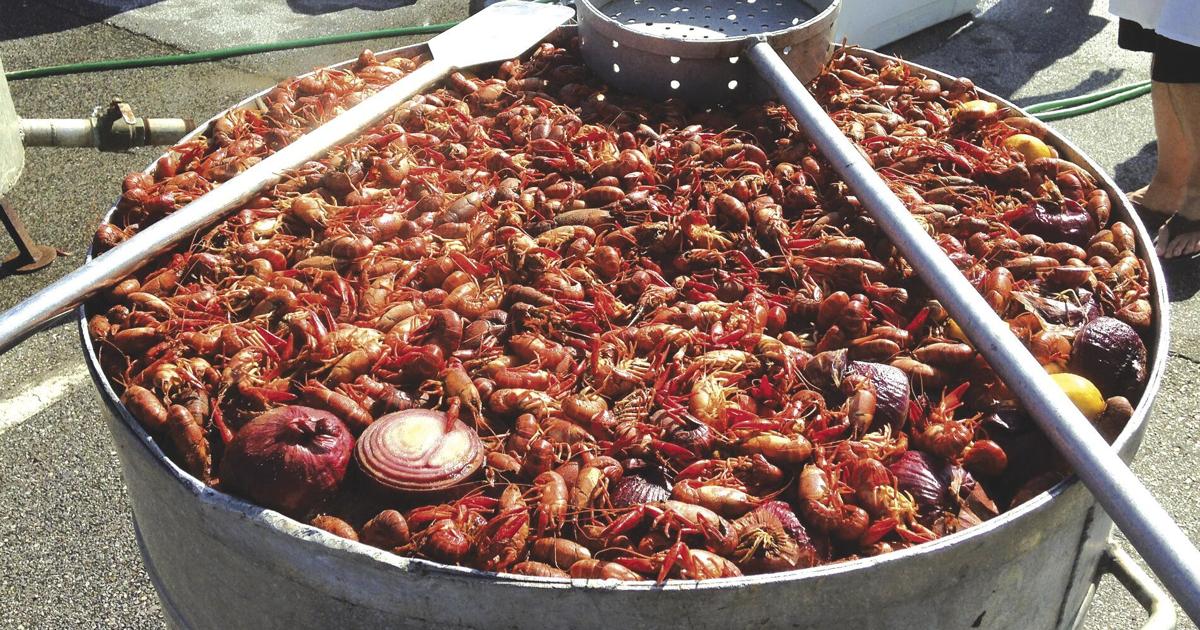Dig into a platter of all-you-can-eat mudbugs at the annual Big Crawfish Bash | Fort Hood Herald
LA MARQUE — Mudbugs, crawdads, crayfish, craydids, crawdaddies, freshwater lobsters, mountain lobsters, rock lobsters or yabbies — whatever you want to call them, if you enjoy a plate or two of tasty seafood treats, tickets are still available for the April 1-2 Big Crawfish Bash in LaMarque, just north of Galveston Bay.
This annual event that set a 2017 Guinness world record for serving 58,083.98 pounds of crawfish in eight hours will include all-you-can-eat crawfish, live music, a crawfish cookoff with more than 50 teams competing, vendor booths, veteran VIP tent, multiple restaurants and a kid zone.
Located at Highland Bayou Park, 1991 Getty Road in La Marque, the rain or shine event is hosted by the Big Crawfish Bash Foundation, a Texas nonprofit corporation that works in partnership with local charities to benefit veterans, children and the disabled. This year, donations will also be made to Camp Hope, Texas Special Olympics and local education foundations, Boy Scouts of America and more.
COVID-19 safety precautions will be implemented per state and local authorities.
While you are in the area, consider taking a trip over to the Texas City Dike, known as the longest man-made fishing pier in the world. Stretching 5.3 miles out into Galveston Bay, the dike is one of the most popular boat launch and fishing areas along the Gulf coast. There are restrooms, a beach area, fish-cleaning stations, bait and tackle shops, restaurants, picnic shelters, a large playground, hike and bike trails, bike rentals, an 18-hole disc golf course and more amenities to enjoy.
From the first weekend in March to the last weekend in October, a charge of $10 per vehicle is required to enter the dike on weekends. It is free during winter months and most summer weekdays. On holiday weekends, the fee goes up to $20 per vehicle per day. Weekend passes for RVs are $30.
Entry fees are only charged to those who drive a vehicle onto the dike. People who want to walk or run or ride bikes do not have to pay.
Authorized for construction by the Texas Legislature in 1935, the Texas City Dike was built from granite blocks ranging in size from a small suitcase to a subcompact car, with a wide paved road running its length. The dike also offers stunning views of lower Galveston Bay, a constant stream of commercial shipping vessels and private watercraft, along with nearby coastlines and islands to include Bolivar Peninsula, Virginia Point, Pelican Island and Galveston’s east end.
Speaking of Galveston, head on down to the island for a visit to Moody Gardens, a 242-acre facility that features three primary attractions: the Aquarium Pyramid, a 12-stories-tall facility containing some 10,000 marine animals including fish, sharks, seals and penguins, each representing various ocean regions from the North Pacific, South Pacific, South Atlantic and Caribbean; the Rainforest Pyramid, with tropical plants, animals, birds, butterflies, reptiles, monkeys and two-toed sloths; and the Discovery Pyramid, focusing on various science-oriented exhibits and activities.
Also at Moody Gardens is Palm Beach, a landscaped, white-sand beach primarily open in the summer months and including a small water park for kids, freshwater lagoons, lazy river, tower slides, hot tub, ziplines and a splash pad. For more information, visit www.moodygardens.com.
Last but not least, there are the many beaches for sunning, surfing, and swimming on Galveston Island.
Heading the list of nicest and most popular is East Beach, known by some as “party beach,” followed by the more family-friendly Stewart Beach, the less-crowded Galveston Pocket Park 2, Porretto Beach with its playgrounds, eateries and picnic areas, and the laid-back El Jardin Del Mar.

